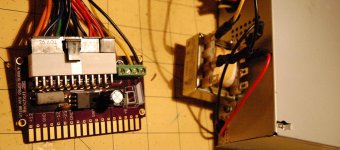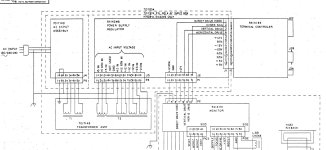Alright, I've pushed everything up to a git, so if anyone wants to mess around with this they can.
I added a big 'ol resistor to the circuit to provide some load for the ATX supply, other than that there are really no changes.
I'll get this thing made and see how it goes. After that we can work on the 103 adapter.
As far as going with a DC-DC boost converter, I'm actually kind of torn about that. First, this circuit is relatively future-proof without any weird components that may not be available in five years. Since this is *already* a project for ancient machines, there's probably going to be someone who wants to use this stuff five or ten years down the line. If anyone is reading this in 2023, you're welcome.
Second, the circuit right now is idiotproof. Simpler is better, I guess. That, and replacing the trafo with a negative boost converter wouldn't save *that* much money, and wouldn't be that much more efficient. Oh, and I'm lazy.
I'll post some updates when I get the board and components together.
I added a big 'ol resistor to the circuit to provide some load for the ATX supply, other than that there are really no changes.
I'll get this thing made and see how it goes. After that we can work on the 103 adapter.
As far as going with a DC-DC boost converter, I'm actually kind of torn about that. First, this circuit is relatively future-proof without any weird components that may not be available in five years. Since this is *already* a project for ancient machines, there's probably going to be someone who wants to use this stuff five or ten years down the line. If anyone is reading this in 2023, you're welcome.
Second, the circuit right now is idiotproof. Simpler is better, I guess. That, and replacing the trafo with a negative boost converter wouldn't save *that* much money, and wouldn't be that much more efficient. Oh, and I'm lazy.
I'll post some updates when I get the board and components together.



